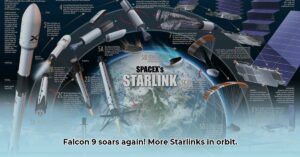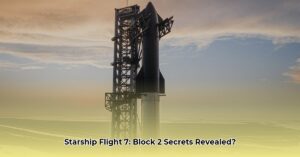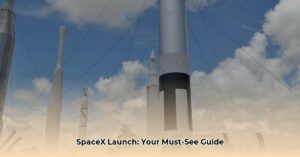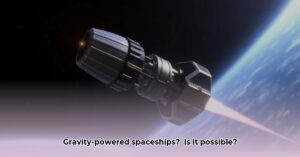Launch and Mission Overview
SpaceX launched Starship Flight 7 on January 16, 2025, from Starbase, Boca Chica, Texas. This mission marked a significant step for the Starship program, focusing on testing the in-space relight of the Raptor engine—a critical capability for deep-space missions. Ship 33, a Block 2 prototype featuring upgraded systems, rode atop the veteran Booster 14. The flight also included the deployment of ten dummy Starlink satellites, demonstrating Starship’s potential for payload delivery.
Mission Objectives: Paving the Way for Deep Space
This mission targeted several key objectives, all centered around the crucial in-space engine relight:
- Orbital Maneuvering: Testing the Raptor engine’s ability to perform precise burns for orbital adjustments, much like a car changing lanes in space.
- Deep Space Transit: Validating the engine’s reliability for long-duration missions to the Moon, Mars, and beyond.
- Orbital Refueling: Demonstrating the capability for future Starship missions to refuel in orbit, extending their range and potential.
- Payload Deployment: Testing the deployment of simulated Starlink satellites, showcasing Starship’s cargo-carrying capacity.
A successful in-space relight would significantly advance Starship’s development, enabling more complex missions and furthering SpaceX’s goal of making humanity a multi-planetary species. Some experts believe that this technology could revolutionize space travel, making it more efficient and cost-effective. Ongoing research continues to explore the full potential of in-space propulsion.
Technical Specifications: Ship 33 and Booster 14
Ship 33, a Block 2 prototype, boasted several key upgrades:
- Redesigned Plumbing System: Likely improved fuel flow to the Raptor engines, enhancing performance and reliability, particularly for the in-space relight.
- Larger Fuel Tank: Enabling longer flights and potentially greater payload capacity.
- Enhanced Heat Shield: Designed to withstand the intense heat of re-entry into Earth’s atmosphere.
Booster 14, a Block 1 veteran, likely underwent modifications to accommodate Ship 33 and support the mission’s objectives. Unfortunately, SpaceX keeps detailed technical specifications confidential. However, the focus on Ship 33’s new plumbing suggests its significant role in achieving the in-space engine restart.
Launch Details: Witnessing History
The launch took place at Starbase, Boca Chica, Texas. This location offers advantages for equatorial launches and minimizes disruption to populated areas. Rocket launch timings are influenced by various factors, including weather and technical readiness. SpaceX typically provides live coverage on their https://https://www.spacex.com/website and https://https://www.youtube.com/spacexYouTube channel, along with real-time updates on social media. For those near Starbase, designated viewing areas offer a spectacular in-person experience. However, it’s always advisable to check for official guidelines and safety information.
Mission Timeline: A Step-by-Step Guide
While exact times vary based on launch day conditions, the general sequence of events for Starship Flight 7 was planned as follows:
| Time (approx.) | Event |
|---|---|
| T-0 | Liftoff |
| T+2 minutes | Stage Separation |
| T+3 minutes | Booster Flip Maneuver |
| T+6 minutes | Booster Descent and Landing (Attempted) |
| T+8 minutes | Ship 33 Main Engine Cutoff (MECO) |
| T+60 minutes | Simulated Starlink Deployment |
| T+66 minutes | Ship 33 Re-entry and Splashdown |
The Future of Starship: Giant Leaps and Beyond
Starship Flight 7 represents a significant milestone in SpaceX’s journey towards reusable, deep-space travel. The in-space engine relight test is crucial for future missions, including lunar landings, Mars exploration, and beyond. Each successful test contributes valuable data, refining designs and pushing the boundaries of space technology. While the exact roadmap remains undisclosed, future Starship developments are likely to include more ambitious tests and iterative refinements. It’s a thrilling time for space exploration, as Starship paves the way for humanity’s expansion into the cosmos.
Frequently Asked Questions (FAQ)
- Q: Why is in-space engine relight so important? A: It’s essential for complex maneuvers in space, including orbital adjustments, deep-space travel, and orbital refueling.
- Q: What were the key upgrades in Ship 33? A: The most significant upgrade was probably the redesigned plumbing system for the Raptor engines, along with a larger fuel tank and enhanced heat shield.
- Q: Where can I watch future Starship launches? A: SpaceX typically streams launches live on their website, YouTube channel, and social media platforms.
Glossary of Terms
- Block 2: A significantly upgraded version of the Starship prototype, featuring improved systems and capabilities.
- Raptor Engine: SpaceX’s methane-fueled engine designed for Starship.
- Starbase: SpaceX’s launch and development facility in Boca Chica, Texas.
- In-space relight: The process of restarting a rocket engine in the vacuum of space.
Further Reading:
- https://https://www.spacex.com/SpaceX Website
This article will be updated as more information becomes available. Last Updated: October 26, 2023.







